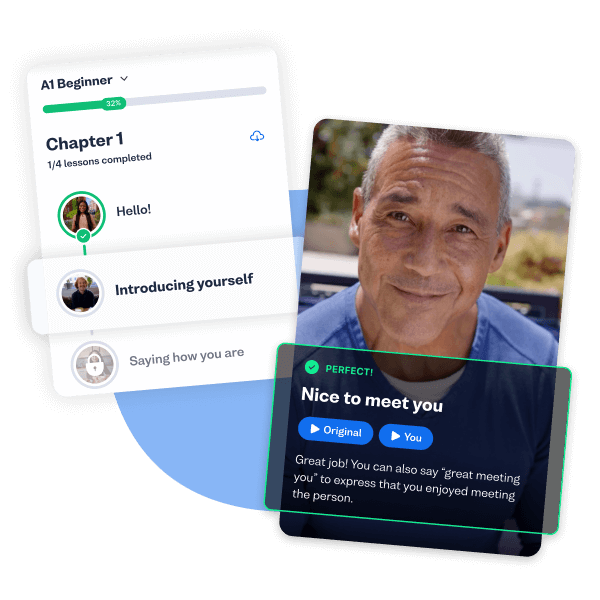I want to learn...
Author:

Barney Meekin
When you’re starting a new language, you need to figure out the best way for you to learn. This isn’t easy. There are so many ways to learn a language and everyone’s method is “the best.” You can fall into the trap of thinking more about how to learn than actually learning the language.
So you can avoid paralysis by analysis, we’re here to give you a rundown on some of the most effective methods of learning a new language.
Is there one best way to learn a language?
There are too many kinds of people from varied backgrounds to say which is the best method. You have your own personality and learning style with your own educational background, needs, and ambitions.
Language learning methods come in and out of fashion all the time too. At one point the grammar translation method was the hottest thing around. Then it was the audio-lingual method or total physical response. The thing is, you’re unlikely to see these methods in modern language classrooms. But back in the day, people swore by their effectiveness.
It doesn’t mean they’re bad or ineffective ways to learn a language. They’re just a little out of date and out of fashion. But even contemporary methods won’t last forever. In the not-too-distant future new methods will come and replace the methods on this list too.
This doesn’t mean you can’t go back to the oldies though. Grammar translation, for example, doesn't make this list. But if you’re the kind of person who benefits from common grammar translation activities, don’t disregard it because it isn’t “modern.”
How to choose the right method for you
Choosing the right method for you is a personal decision. And there’s no magic bullet to finding the best one. It takes a lot of trial and effort. Language learning is a lot like science. Choose a method, try it for a while, look at the results, and decide whether it’s working for you or not. If it isn’t, on to the next method. Keep experimenting until you find the method (or methods) that works for you.
7 of the most effective methods of learning a language
To give you a headstart, here are 7 of the best methods for learning a new language.
1. Mobile-assisted language learning
Computer-assisted language learning has been around for years but with more people having mobile devices than personal computers, it’s time for mobile-assisted language learning to shine. Most of us have at least one mobile device. We can use them to access language learning materials, teachers, and native speakers anywhere at any time. There isn’t a more convenient way to learn a language.
You can use dedicated language learning apps like Busuu to help you master a new language. You can access content in general apps like YouTube. And you can use social media to communicate with native speakers and take part in authentic conversations.
You can practice all four skills — speaking, reading, writing, and listening — from your mobile device. This means that for the first time in history, you can truly learn a language from your own home.
2. The communicative approach
Visit any language learning classroom in the world, and there‘s a good chance the teacher will be taking the communicative approach. There’s a good reason this is such a popular method: The communicative approach prioritizes interaction. Lessons are fun, with lots of communication.
The communicative approach is all about practicing communication in real-life situations. Group work is key so it’s important to find some people to do this with. This practice is mostly oral practice. Things like group work, role plays, interviews, information gaps, and opinion sharing.
Learn a new language and improve your job prospects
As you follow these methods that we recommend in learning a new language, you can be well on your way in becoming fluent in a chosen language you prefer, and use it to boost your career and job prospects. Try learning a new language with Busuu’s free online courses and learning resources!
3. Language immersion
Let’s be honest, if you want to learn a language, living overseas is one of the most effective ways to do it. When you live overseas, you’re immersed in the language and culture. Every interaction you have is in your new language. But how many people can drop what they’re doing and go overseas? Not many — especially if you’re not as young as you used to be.
There are immersion schools though. Research shows that language immersion is most effective for children which is why bilingual schools are so popular. If you’re lucky enough to go to one of these schools, you get language immersion in your own country. Unfortunately, if you’re an adult, you don’t have this opportunity.
But don't worry — there are still things you can do as an adult to immerse yourself without going overseas:
Read lots of books
Watch lots of movies
Listen to lots of music
Take part in online discussions
Play video games
Surround yourself with your new language as much as possible. You might have to stop consuming content in your native language for a while. But it’ll be worth it.
4. Content and language integrated learning (CLIL)
CLIL — which is closely linked to language immersion — is getting more and more popular. In CLIL you learn a new subject in a new language. It might sound crazy but people have had good results. For CLIL, the subject and the language must both be new. So you learn a new skill or get new knowledge and learn a new language at the same time.
You learn language indirectly in this method. You use language to learn as well as communicate. And the language you learn is dependent on your new subject. This means the need is authentic. A teacher doesn’t decide the language. Neither does a coursebook. You need the language necessary for learning your new subject.
The new subject can be anything you want. Want to learn geography? Great, do it in a new language. How about how to design clothes? That works too — you could learn how to make clothes in French.
5. Task-based learning (TBL)
In task-based learning you need to — you guessed it! — do tasks. The tasks are interactive and you need to work in a group to solve the problems. The focus is communication. You can’t complete the tasks without it.
TBL allows you to use a wide range of vocabulary and grammar. When you follow lessons from a course, the vocabulary and grammar are predetermined. In TBL the task determines the language you need to use. You get a more well-rounded practice of your new language.
6. The direct method
With the direct method, there is no translation. You do everything in the new language. This might sound terrifying if you’re used to relying on Google Translate or dictionaries to learn a language but it works.
The focus of the direct method is on speaking and listening. And the language taught is everyday language for real-life situations. Grammar isn’t taught in the direct method. Any you learn is done inductively which means you learn it by figuring it out yourself.
7. The natural approach
Similar to the direct method, the natural approach tries to mimic how people learn their first language. The focus is on communication. Meaning and message is more important than accuracy so there are no drilling activities or error correction. The keys to this approach are a lot of comprehensible input and creating an environment with low anxiety. For example, don’t force yourself to speak if you’re not yet ready. Your communication skills develop naturally.
AUTHOR

Barney Meekin
Newlanguages


